Knife – Man’s Best Friend

Contents
A Brief History of Knives
The first ancestors of knives appeared approximately in the Palaeolithic. At that time claw-like fractions, which were later adjusted with a handle made of wood or bones, were used. However, this primitive instrument was not too effective and had a short lifespan. Over time, people learned to process metals and created knives made of copper or bronze. Although copper was easily hammered, it was very weak. During the Iron Age, both copper and bronze were replaced with steel. That was because steel was stable and steel knives were easy to sharpen. The popularity of steel knives persisted until the Middle Ages, when people used them for food preparation and eating. Knives also became useful tools for hunting or carving purposes. We should not forget to mention that people began to arm themselves with knives, turning knife into a deadly instrument used in self-defence and attacks.
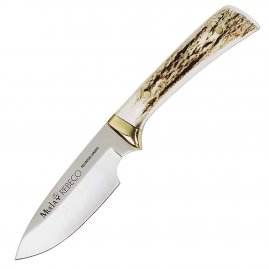
Universal Use
There are many types of knives depending on their intended use. We can divide them into two main categories: pocketknives (folding knives) and knives with a fixed blade. Probably the most common type of knife used in our everyday lives is the kitchen knife. Kitchen knives come in various shapes and sizes that make cutting food and preparation of meals much easier. Outdoor, hunting or folding knives were designed to make our survival easier. If you like travelling, you might aim for a multifunctional knife with several practical instruments. The most popular fighting and utility knives include the Karambit folding knives which are characterized by their curved blade and an effective cut.
Types of Knife Grinds
Knives can also be differentiated on the basis of their grinding type. There are six most common grinds. Hollow grind is a symmetrical blade with very sharp edges. It is more prone to damage because it is thin. An example of this type is a razor. It is suitable for cutting softer materials. Full Flat Grind begins tapering to the edge evenly on both sides. It is typical for kitchen knives. These are very sharp, but they should not be sharpened very often. Scandinavian Grind does not begin tapering until closer to the edge. The knife remains sharp for a longer time, but it is harder to cut with it. Chisel Grindis tampered only on one side and it is used mostly for Japanese kitchen knives. It is very sharp and suitable for cutting and chopping. Next type is called Compound Bevel Grind, which is very similar to the Scandinavian Grind, but it has a secondary bevel to the existing grind. This type of knife is not very sharp, but it is highly resistant. The last type, the Convex Grind, features a rounded curve that comes to a point. It makes the knife sharp and durable, but it makes sharpening rather difficult.
The Magnificent Damascus Knife
The beauty of the marbled blade combined with high quality – such are the knives made of the Damascus steel. The name of the steel comes from the Syrian city Damask, through which the material used to be transported. An interesting fact is that the original method of production of this steel is still a mystery today. The method used today is a mere imitation of the craft that vanished a long time ago. So how was it made? By using smith welding, two kinds of steal are folded over one another and welded. The result is a blade with a fine structure and various patterns of the Damascus steel. As soon as the two metals with different properties are combined, the knife receives properties of both - not only the desired stability, without which the knife would be fragile, but also flexibility of the softer compound. The combination of two mentioned materials makes the steel both durable and flexible. These very properties along with its unique design mae the Damascus knives a product of high demand.
Maintenance
If you own knives and you actually use them, not just display them, you probably know that they need some attention. The maintenance itself differs from one type of a knife to another. The most important part of it is to clean it from dirt. As for the knives with a fixed blade, the maintenance is much easier than it is for the folding knives. Most importantly, pocketknives must be carefully checked for dirt in every accessible place. You can use a brass wire or a soft brush for this. The blade has to be dried afterwards and if it is not made of a stainless material, it has to be greased with oil intended for weapons or other knife maintenance product.
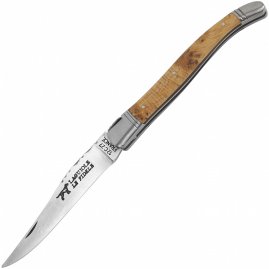
Sharpening
Sharpening is the basic part of the maintenance. Sharpening increases the sharpness of the knife, but also decreases its durability. For this reason, it is crucial to sharpen the knife correctly. Most blades require only a whetstone, or you can also use materials like natural schist or natural stones. Sharpening steel will not sharpen the blades, only smooth them out. It is therefore suitable only for a mild final sharpening. But after a knife has been used for some time, sharpening is a must. There are also sets of special modern knife sharpeners which can help you keep the exact angle of sharpening. How to go about sharpening? The first step is to let the stone absorb water into its pores. The wetness of the stone needs to be maintained during the whole sharpening process. Then, you just need to pull the blade against the sharpener, as though you wanted to cut out a thin slice of it. Depending on the type of grind, you might need to repeat this process for the other side of the blade. Do not forget to keep the same angle when sharpening both sides. The rule is, the sharper the angle, the sharper the blade.
Storage
Every type of knife requires a different type of storing, there are similar rules for all of them. Correct way of storing helps to protect knives against damage and prevent unnecessary injuries. As far as kitchen knives are concerned, forget about a drawer. The knives would clash against each other every time the drawer moves, gradually making them blunt. A proper wooden knife stand is a much better idea. For other types of knives, a storage in a protective case or a scabbard is the best choice. This prevents injuries and make transport easier. You cannot cut yourself on a knife inside a protective case. Whatever you choose for the storage of your knives, knives should definitely not be exposed to humidity or water. Even if a knife is made of a stainless material, humidity can damage its handle. If a knife needs to be washed, wash it manually and dry it afterwards. A dishwasher is not a good idea. The chemical composition of the detergents used for dishwasher combined with high temperatures can irreversibly damage your knife.

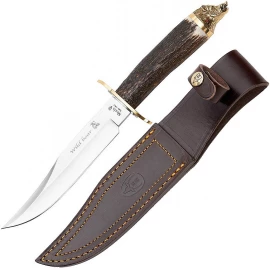
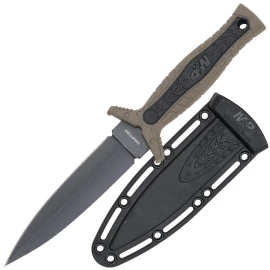
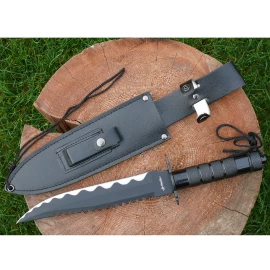
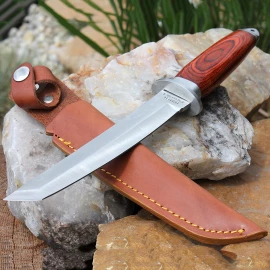
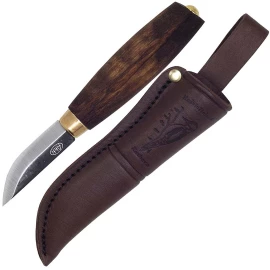
Comments